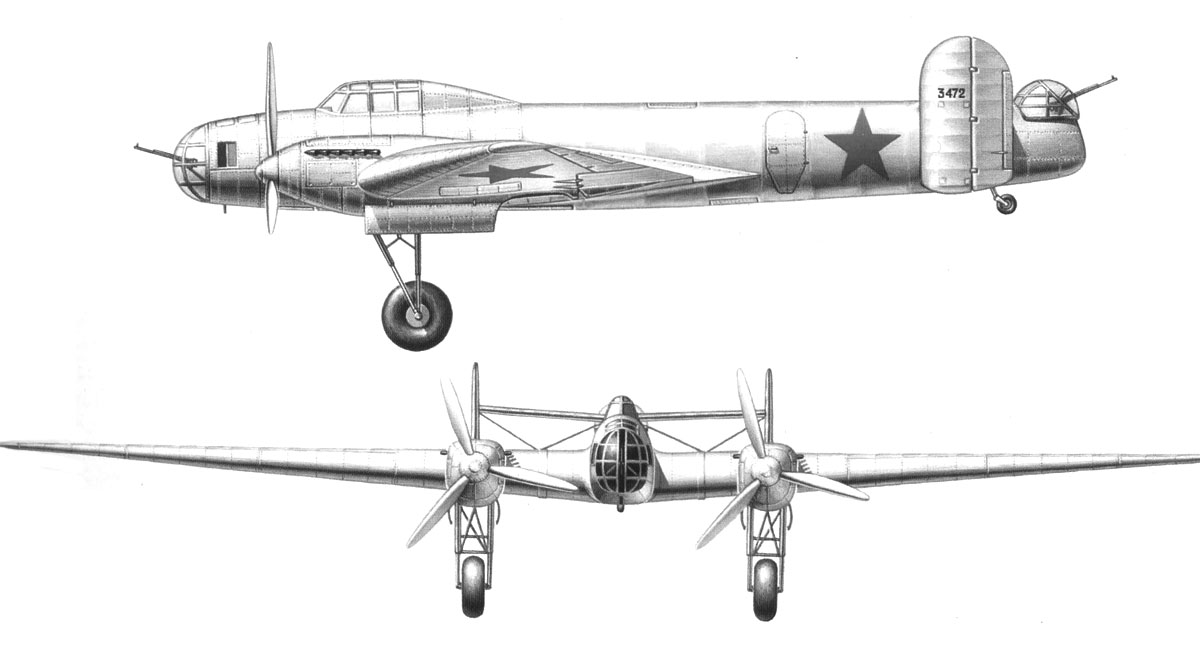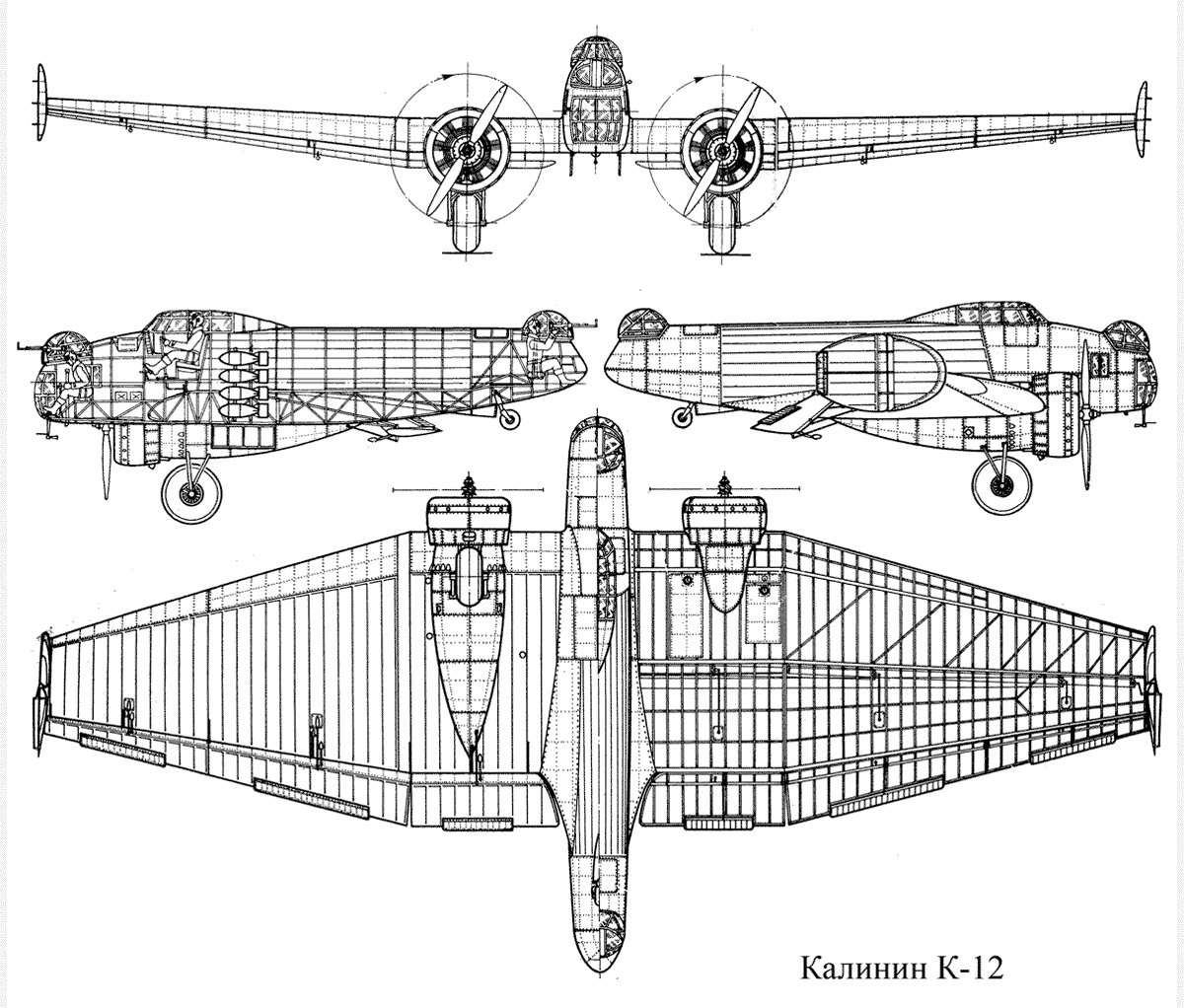|
K-13
 |
- Bomber
- First flight: 1936
- Kalininн
|
In 1933, the HAZOSS design bureau received an assignment to design another combat vehicle - the K-13 bomber. The Soviet Air Force needed a long-range strike aircraft capable of carrying up to 1 ton of bomb load over a distance of up to 5,000 km at an altitude of 4,000 m at a speed of 350 km/h. The implementation of the project was entrusted to the design team under the leadership of P. V. Dybsky. In the same period, the Design Bureau of A. N. Tupolev - ANT-37 (DB-2) and S. V. Ilyushin-TsKB-26 (DB-3) worked on similar tasks.
For the new aircraft, a monoplane scheme with a mid-position cantilever wing was chosen. All-metal, trapezoidal in plan, the wing had two spars. The vertical plumage is two-keeled. Horizontal is missing. In fact, K-13 is a further development of the ideas embodied in K-12.
The aircraft had two liquid-cooled engines enclosed in NACA-type cowls. The landing gear was retracted into the same cowls after takeoff. The engines were powered from four tanks located in the wing.
Metal propellers with variable pitch in flight. To reduce the landing speed, the aircraft was equipped with Schrenk-type flaps with electric control. It was assumed that the crew of the aircraft would consist of three people - a pilot, a navigator-gunner and a rear gunner. Defensive armament: three ShKAS machine guns - two in front of the bomber and one in the aft gun turret.
According to calculations, the maximum speed of the K-13 was to be 407 km/h at an altitude of 4000 m. The landing speed was 90 km/h, which made it possible to use a relatively short runway, which is very important in a front-line situation.
In parallel with the combat version, a passenger one, the K-14, was also developed. Crew of two. The number of seats is 12. For short flights, it was planned to install additional seats. According to the calculations, the car had to develop up to 429 km / h, while the landing speed was only 84.5 km / h. In December 1934, the project was submitted to the Central Jury of the All-Union competition for a high-speed passenger aircraft.
The prototype K-13 was built in 1936 in Voronezh. At the very first tests, it showed that it was significantly inferior in its flight qualities to the DB-3 aircraft (partly due to less suitable engines), and it also turned out to be overweight. Interest in the car quickly faded.
|
| Crew |
3 |
| Dimensions |
|---|
| Wing span, m |
23.00 |
| Wing arrea, m² |
78.70 |
| Length, m |
13.40 |
| Powerplant |
|---|
| 2 × radial PE M-34, power, hp |
2 × 750 |
| Weight, kg |
|---|
| Loaded weight, kg |
7,500 |
| Performance |
|---|
| Maximum speed, km/h |
407 |
Cruise speed, km/h |
369 |
| Service range, km |
1,500 |
| Armament |
|---|
| Three 7.62 mm ShKAS machine guns, bombs, kg |
1,000 |
Bibliography

- The history of designs of planes in USSR 1938-1950 /Vadim Shavrov/
- Aircraft of the country of the Soviets. 1917-1970 /Simakov B.L./
|






